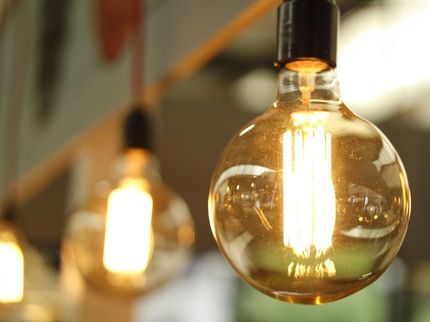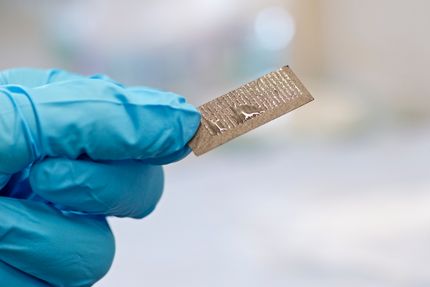Climate-friendly electricity from ammonia
Electricity and heat are generated in a single compact system — without CO2 emissions or other harmful byproducts.
Using hydrogen to generate electricity does not cause any climate-damaging emissions. But storing and transporting the gas pose technical challenges. With this in mind, Fraunhofer researchers use ammonia, a hydrogen derivative that is easier to handle, as a starting material. Ammonia is cracked in a high-temperature fuel cell stack, and the hydrogen produced in this process is converted to electricity. The waste heat can be used as heat energy, for example.

Demonstration system for carbon-free generation of electricity with ammonia in high-temperature fuel cells (SOFCs).
© Fraunhofer IKTS
There are high hopes for hydrogen and its derivatives as sources of energy. They play a central role in the energy transition component of the German federal government’s National Hydrogen Strategy. Ammonia (NH3) has been identified as having especially high potential, as hydrogen is easier to store and transport in the form of ammonia.
A team of researchers with Prof. Laura Nousch from the Fraunhofer Institute for Ceramic Technologies and Systems IKTS in Dresden has developed a demonstrator based on a high-temperature fuel cell stack (solid oxide fuel cell, SOFC) that can use ammonia to generate electricity directly and with high efficiency. Electricity and heat are generated in a single compact system — without CO2 emissions or other harmful byproducts.
Ammonia becomes hydrogen, hydrogen becomes electricity
Fraunhofer researcher Laura Nousch explains the advantages of this method: “Ammonia has been used in the chemical industry for decades, for example to produce fertilizers, so there are established and familiar processes of handling this substance. However, it still needs to be treated with caution. As a hydrogen carrier, ammonia offers high energy density, and at the same time it is relatively easy to store and transport. Ammonia is an ideal starting material for climate-friendly generation of electricity and heat energy.”
In the process, ammonia is first conditioned and fed into the cracker, where it is heated to temperatures of 300 degrees Celsius or higher. In response, it breaks down into hydrogen (H2) and nitrogen (N2). When the process is completed, the nitrogen can simply be released together with water vapor as harmless exhaust gases. Then, the hydrogen is fed into the high-temperature fuel cell. In the ceramic electrolyte, it flows over the anode, while air streams pass the cathode. Splitting the hydrogen releases electrons that move from the anode to the cathode. This is how electricity starts to flow. In addition to water vapor, this electrochemical reaction also produces thermal energy. The afterburning also generates heat. “The heat is used to maintain the high temperature inside the cracker and is also released as waste heat. The latter can then be used for purposes like heating buildings,” Nousch explains.
High efficiency at 60 percent
When designing the system, the researchers at Fraunhofer IKTS drew on their decades of expertise in working with ceramic fuel cell stacks. The team was able to build a fuel cell demonstrator that handles the entire process of breaking ammonia down into hydrogen and subsequently generating electricity from it all in one device. The efficiency of this method, just like those based on natural gas, stands at 60 percent, but with the difference that ammonia SOFC systems are comparatively simple and robust in structure.
The system is perfect for smaller industrial companies that want to generate electricity without carbon emissions but are not connected to the future core hydrogen network, or for municipalities and local utility companies looking to supply green heat to their customers. Even large ships can be equipped with ecofriendly drives based on ammonia/hydrogen in this way.
Customized fuel cell systems
The higher the temperature in the cracker, the more of the ammonia is broken down into hydrogen. In turn, at lower temperatures, meaning just over 400 degrees Celsius, a considerable portion of the ammonia remains. “However, our tests showed that the ammonia molecules also break down completely into hydrogen in the high-temperature fuel cell. This can even increase the system’s overall performance,” Nousch says. And that opens up various options for thermal management. “Targeted design and smart thermal management are combined with other modifications to aspects such as the power and the size of the fuel cell stacks. So, we are able to devise customized solutions for climate-friendly generation of electricity and heat, especially for small and medium-sized enterprises,” she explains.






























































